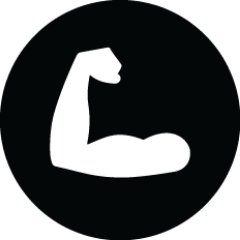
By Yolanda Lau
The future of work unfolds with boundless potential and transformative opportunities awaiting. As we stand on the cusp of exponential change, a new era emerges in which the skills imperative for success diverge from those of the 20th century. The rise of automation, artificial intelligence, and the gig economy is changing how we work. To thrive, companies and individuals must be proactive in preparing themselves for the future of work.
Embracing Automation
The rise of automation is one of the most significant changes in the future of work. Automation encompasses various technological advancements aimed at reducing or replacing human labor with machinery or software — and is expected to reshape almost every industry. Many low-skilled jobs, such as assembly line work or data entry, will likely be automated, leading to a transformation in job roles and skill requirements. Automation isn’t about replacing humans entirely — instead, it’s about augmenting human capabilities and efficiency. Companies must invest in training and development programs to ensure their employees have the skills required to adapt to this evolving landscape. While automation may displace some jobs, it will also create new opportunities for those who can design, build, and manage automated systems.
Integrating Artificial Intelligence
In tandem with automation, artificial intelligence (AI) is revolutionizing the future of work. AI technologies — including machine learning, natural language processing, computer vision, and robotics — are increasingly integrated into various aspects of business operations. While many fear that AI will lead to widespread job loss, the reality is more nuanced. AI has the potential to enhance productivity, streamline processes, and unlock new possibilities. However, individuals who resist or fail to adapt to AI may find themselves at a disadvantage in the job market. Companies must invest in AI education and training to empower their workforce to leverage AI technologies effectively. Every senior executive should be thinking, “How can my team use AI to augment themselves?” By embracing and integrating AI, companies can gain a competitive edge and drive innovation in the evolving landscape of work.
Navigating the Gig Economy
Simultaneously, the gig economy continues to grow, redefining traditional notions of employment. More people are taking side gigs, to hedge against potential layoffs and to sharpen and learn new skills. And more individuals are gravitating towards freelance or contract engagements, thanks to the rise of online platforms facilitating flexible work arrangements. To adapt, companies must embrace the liquid workforce — and learn to cultivate and work with a virtual talent bench engaged in project-based work.
Shifting towards Project-Based Work
The future of work will also see a shift towards project-based work. This trend is driven by the need for agility — and for organizations to constantly be responsive to changing market conditions. Project-based work allows companies to quickly assemble a team of experts with the necessary skills to complete a specific project, rather than maintaining a large permanent workforce. Companies must invest in project management and collaboration tools — and create a documentation-first culture — to ensure that their employees and contract workers can work effectively in project-based teams.
Cultivating Skills and Adaptability
To prepare for the future of work, companies must be proactive in developing their employees’ skills and abilities. This can be achieved through a variety of methods, such as on-the-job training, online courses, and formal education programs. Companies must also invest in leadership and management development programs to ensure their employees have the leadership skills required to succeed in a rapidly changing workplace.
Individual Agency in Career Development
Individuals must take ownership of their career development and professional growth — honing their skills through lifelong learning and side gigs. By actively cultivating adaptability and resilience, individuals can position themselves as indispensable assets in the dynamic landscape of the future workplace. Individuals must also be proactive in building their personal brand and cultivating professional networks. Today, everyone is a brand — and individuals must curate their online presence and narrative to authentically reflect their values, expertise, and aspirations. Doing this stratgeically can help find uncover new opportunities. When combined with a strong network of weak ties, individuals can leverage diverse connections to achieve their career goals.
The Imperative of Work-Life Fit
The future of work is also likely to see a greater emphasis on work-life balance, or as I prefer to call it, work-life fit. We’re already seeing this with some countries exploring a four-day work week and others have made it illegal for companies to contact employees outside of the workday. Executives, policymakers, and workers are realizing that work-life fit is essential for both individual well-being and organizational success. Companies must adopt flexible work arrangements, offering employees the ability to work from home or on flexible schedules. They must also invest in creating a workplace where mindfulness, compassion, and grace are commonplace.
Take Action to Transform Your Future
The future of work is here — and it’s teeming with promise and transformation. The time for action is now. Whether you’re a company leader or an individual contributor, the future of work awaits. Embrace change, augment yourself, invest in growth, and seize every opportunity that comes your way. Together, we can shape a future where innovation thrives, and success knows no bounds. The journey starts today — let’s make it count.
Interested in the Future of Work? Join the Work of the Future #FutureOfWork Facebook Group.

Yolanda Lau is an experienced entrepreneurship consultant, advisor, and Forbes Contributor. She is also an educator, speaker, writer, and non-profit fundraiser.
Since 2010, she has been focused on preparing knowledge workers, educators, and students for the future of work.
Learn more about Yolanda here.






















